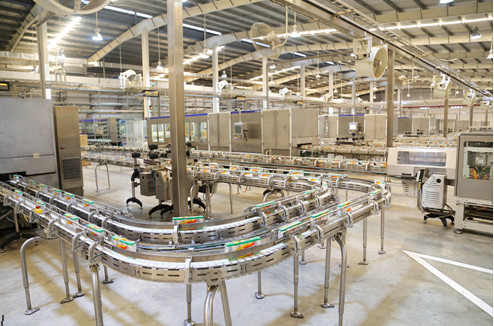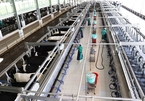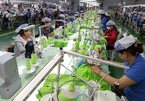A report released at a recent workshop on Vietnam’s dairy industry showed that in 2009, the domestic output satisfied 20-30 percent of the domestic demand and only 5 percent of milk cows were farmed in concentrated farms, while the remaining were bred by households on a small scale. This has increased costs.

In 2018, Vietnam imported $963 million worth of dairy products.
The Institute for Brand and Competitiveness Strategy (BCSI) predicted that the import turnover will increase sharply in the time to come as import tariffs have been cut under multilateral and bilateral FTAs.
Vu Ngoc Quynh, secretary general of the Vietnam Milk Association, said Vietnamese enterprises have no other choice than renovating technologies, building material area, improve productivity and reduce the production cost.
In implementing CPTPP, Vietnam’s enterprises have opportunities to import equipment, production lines, breeders and dairy products at low tariffs.
|
In 2018, Vietnam imported $963 million worth of dairy products. The Institute for Brand and Competitiveness Strategy (BCSI) predicted that the import turnover will increase sharply in the time to come as import tariffs have been cut under multilateral and bilateral FTAs. |
Experts said that Vietnam’s enterprises hold a great advantage in large distributionnetwork.
Therefore, they should develop new products and conquer niche markets, such as micronutrients and biomedical milk to serve the diverse needs of consumers.
Vietnam also has great opportunities to export dairy products.
Deputy Minister of Agriculture Tran Thanh Nam said the Chinese market has opened and dairy producers now are preparing to conquer the $30 billion per annum market.
According to Nam, China imports $3.5 billion worth of dairy products of different kinds each year. China is believed to be a very potential market. Vinamilk, the nation’s leading dairy producer, has signed a cooperation agreement on exporting dairy products to China.
A senior executive of Vinamilk said the dairy output of the company would be 5 percent in 2019-2021.
It will focus on its major products and develop new product lines, especially products with plant origin, launch new products targeting youth, and expand rural market share.
The producer is planning to set up a factory in Myanmar, a market with the current consumption level of 10 liters per annum, in 2019.
Prior to that, in 2018, Vinamilk spent $19.7 million to acquire 51 percent of shares in Lao Jagro Development Xiengkhouang Co, which is running many milk cow farms in Laos, a step to prepare to export products to ASEAN markets.
Also striving to conquer the world market, in March 2018, NutiFood joined hands with Delori to export Pedia Plus, a specialized product, to the US.
It also has cooperated with BASF to add HMO substance into nutritious milk for children.
Kim Chi

Vinamilk ups stake to 38.3% in GTNFoods
The Vietnam Dairy Products JSC (Vinamilk) has acquired more than 90 million shares in GTNFoods JSC to raise its ownership to 38.34 per cent.

Exploiting FTAs: milk and fabric companies seek opportunities
The doors to export markets have opened after the signing of government-to-government agreements. However, enterprises still have to overcome many challenges.
 It is expected that the average dairy product demand of Vietnamese will increase to 28 liters per annum by 2020.
It is expected that the average dairy product demand of Vietnamese will increase to 28 liters per annum by 2020.